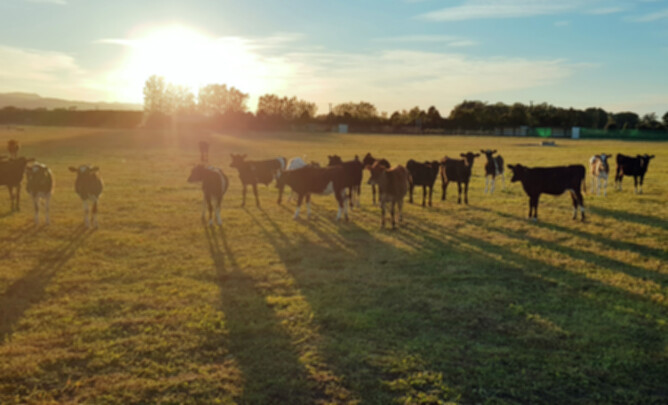Please note, this article contains links to graphic medical photographs of a calf's heart taken during post-mortem examination.
Recently I was asked to perform a post-mortem examination on a calf that had died unexpectedly after disbudding.
The calves had all been sedated to do the job, and afterwards this calf woke without any problems. However, once she sat up and started moving around, she was seen breathing strangely. Sadly, she died a few hours later.
When I opened her up for the examination, I found her liver was enlarged and her heart was huge and misshapen – almost like a ball. The walls of the right side of the heart were far thicker than they should have been and so were the muscles that control the opening of the heart valves. Additionally, the sac around the heart was full of fluid, when normally it would be pretty much empty. These signs all pointed towards right-sided congestive heart failure.
When I looked closer, I found a large hole in the wall between the two ventricles (the lower heart chambers) – see figure 1. A ventricular septal defect (hole in the heart) is a congenital defect occasionally found in calves and the cause is unknown.
In a normal heart, when the ventricles contract the right one pumps blood to the lungs, while the left one pumps blood around the rest of the body. If there is a hole in the wall between them, some blood flows through the hole from left to right instead.
Due to its smaller workload, the right ventricle is naturally weaker. But when this extra blood flow happens it has to work a lot harder, which causes it to enlarge as the muscle bulks up – see figure 2. As the wall thickens there’s less room in the ventricle for blood, so it starts backing up into the liver. Eventually circulation collapses, causing death.
Most affected animals die at birth or at a very young age, although some can survive to adulthood if the hole is small. Symptoms can include poor growth, weakness, listlessness, and difficulty breathing after exercise.
Many calves with this issue die suddenly when they are a few weeks old. In this case, no symptoms had been noticed before the calf was sedated, but the sedation was probably too much for the already struggling heart.

